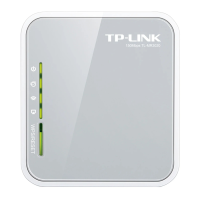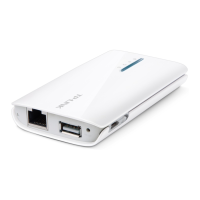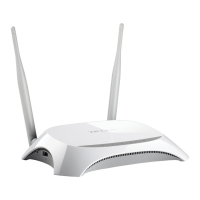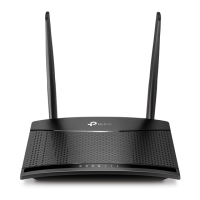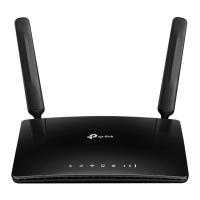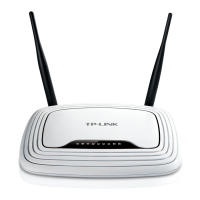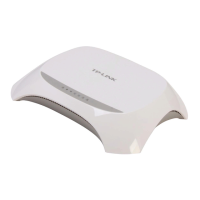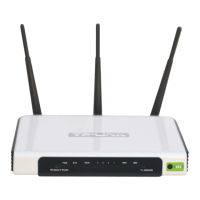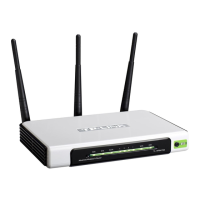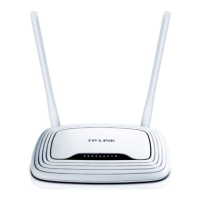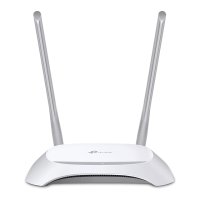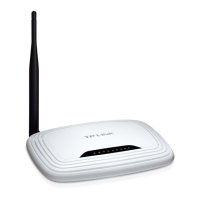Do you have a question about the TP-Link TL-MR3220 and is the answer not in the manual?
Step-by-step guide on how to physically connect the router to modems, PCs, and power.
Guides users through the router's web-based utility to quickly configure basic network settings.
Overview of network configuration options, including Internet Access, 3G, WAN, MAC Clone, and LAN.
Introduces the wireless settings, including basic settings, security, filtering, advanced options, and statistics.
Explains the DHCP settings, client lists, and address reservation for automatic IP configuration.
Covers port forwarding features like Virtual Servers, Port Triggering, DMZ, and UPnP.
Introduces security options including Basic, Advanced, Local Management, and Remote Management.
Setting up rules for controlling internet access based on host, target, and schedule.
| Ethernet LAN | Yes |
|---|---|
| Cabling technology | 10/100Base-T(X) |
| Networking standards | IEEE 802.11b, IEEE 802.11g, IEEE 802.3u |
| Ethernet LAN data rates | 10, 100 Mbit/s |
| Ethernet LAN interface type | Fast Ethernet |
| DHCP client | - |
| Antennas quantity | 1 |
| Antenna connector type | RP-SMA |
| Antenna gain level (max) | 5 dBi |
| Ethernet LAN (RJ-45) ports | 4 |
| Rack mounting | No |
| Frequency band | 2.4 GHz |
| Frequency range | 2.4 - 2.4835 GHz |
| Security algorithms | 128-bit WEP, 64-bit WEP, WEP, WPA-PSK, WPA2-PSK |
| Product color | Gray |
| Modulation | 16-QAM, 64-QAM, CCK, DBPSK, DQPSK, OFDM |
| Wi-Fi standards | 802.11b, 802.11g, Wi-Fi 4 (802.11n) |
| Top Wi-Fi standard | Wi-Fi 4 (802.11n) |
| Storage temperature (T-T) | -40 - 70 °C |
| Operating temperature (T-T) | 0 - 40 °C |
| Storage relative humidity (H-H) | 5 - 95 % |
| Operating relative humidity (H-H) | 10 - 90 % |
| Certification | CE, FCC, RoHS |
| Windows operating systems supported | Windows 2000, Windows 2000 Professional, Windows 7 Home Basic, Windows 7 Home Basic x64, Windows 7 Home Premium, Windows 7 Home Premium x64, Windows 7 Professional, Windows 7 Professional x64, Windows 7 Starter, Windows 7 Starter x64, Windows 7 Ultimate, Windows 7 Ultimate x64, Windows 98SE, Windows NT, Windows Vista Business, Windows Vista Business x64, Windows Vista Enterprise, Windows Vista Enterprise x64, Windows Vista Home Basic, Windows Vista Home Basic x64, Windows Vista Home Premium, Windows Vista Home Premium x64, Windows Vista Ultimate, Windows Vista Ultimate x64, Windows XP Home, Windows XP Home x64, Windows XP Professional, Windows XP Professional x64 |
| Depth | 138 mm |
|---|---|
| Width | 204 mm |
| Height | 44 mm |
| Weight | - g |
